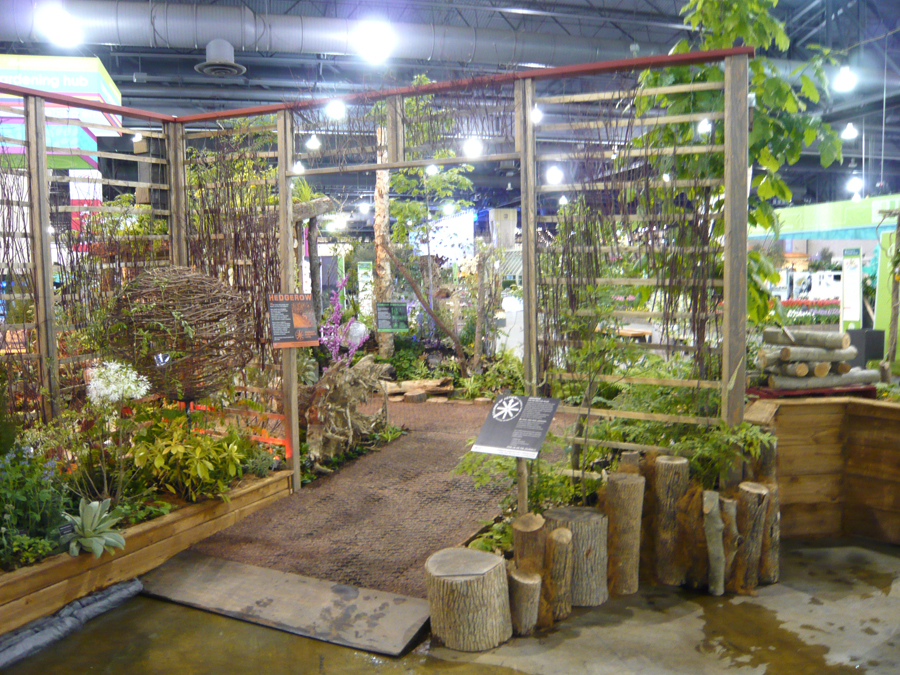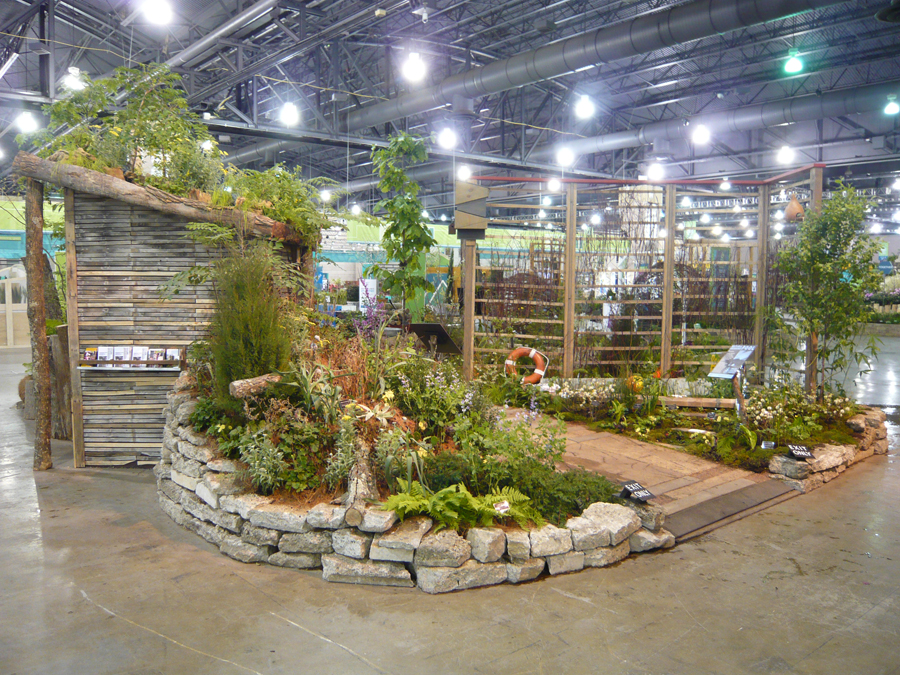Tyler Landscape Architecture and Horticulture’s exhibit in the 2020 Philadelphia Flower Show—the largest indoor event of its kind in North America—once again built on its award-winning history and inspired visitors to engage in more sustainable, eco-considerate practices at home.
Students in Tyler's Landscape Architecture and Horticulture programs set up Tyler's exhibit, “Course of Action: A Radical Tack for Suburban Tracts,” at the 2020 Philadelphia Flower Show.
The Tyler School of Art and Architecture, Temple University’s Landscape Architecture and Horticulture programs took home three awards in this year's Philadelphia Flower Show (February 29–March 8, 2020): a Gold Medal for educational value, horticulture, design and craftsmanship; The Alfred M. Campbell Memorial Trophy for an exhibit that demonstrates the most successful use of a variety of plants in a unique fashion; and a Gold Medal Plant Award, which is given for the best use of Pennsylvania Horticultural Society Gold Medal plants in a major exhibit. This year's success builds on Tyler's past exhibits in the show, having previously earned Gold Medals, “Best in Show” and a unique National Park System Director’s Award.
This year’s exhibit, “Course of Action: A Radical Tack for Suburban Tracts,” featured over 75 different species and more than 1,000 individual plants, and portrayed an “ungardened” suburban landscape that attracts wildlife, cultivates resilience through diversity and appreciates restraint and the viability of repurposed building materials. Taking a “radical tack” is about changing direction—reorienting and stopping actions that may prove harmful and replacing them with behaviors that are respectful of other people and organisms.
“I think with a lot of people the idea of an ‘unkempt’ lawn means they’re not a good citizen or neighbor,” said Tyler Adjunct Assistant Professor Michael LoFurno, who coordinated Tyler’s exhibit with Associate Professor of Landscape Architecture Rob Kuper and Greenhouse Horticulturist Benjamin Snyder. “For many, it’s ‘mow, blow and go’ without consideration for the other creatures we share the planet with. With this exhibit, we tried to introduce the ideas of welcoming animals and other organisms; reduce the use of resources, particularly fossil fuels; and enhance diversity and chance.”
“We have to think about the bigger picture. What are we doing, why are we doing it and how does it impact the world around us?”
– Rob Kuper
Thanks to Temple Ambler’s expansive facilities, including a 100+ acre arboretum, greenhouses and gardens, horticulture faculty and students worked for months to select plants for the exhibit and ensure they’re ready—Tyler is one of only a handful of exhibitors that forces blooms for their exhibits. Additionally, unlike previous years, this year's show’s educational exhibits provided pathways to walk literally through them, rather than around them—a design concept that Tyler has already been incorporating for years.
“It is a tremendous experience to be able to build something with our hands and learn how to use the tools,” said Landscape Architecture junior Fiona Eickman. “The skills we are using allow us to bring ideas that we designed and make them a reality.”


Tyler's exhibit in the 2020 Philadelphia Flower Show.
Visitors who entered Tyler’s exhibit were welcomed by a hedgerow of trees and shrubs; a tall screen incorporating red osier dogwood, a corner woodland that includes logs that demonstrate home mushroom farming techniques, a green roof woodshed as well as a natural swimming pool, which relies on plants to filter and oxygenate the water rather than chlorine and other chemicals.
“I hope people were inspired to reconnect and get behind the ideas we presented. I think there are many people who want to embrace environmentally-friendly concepts but aren’t sure how to get started.”
– Abigail Long, Landscape Architecture Junior
All of the aspects in Tyler’s exhibit can be replicated at home, including transforming a corner of the backyard into woodlands with the hedgerows (rather than fences) to connect them, providing safe avenues for animals to travel.
“We want people to truly connect with these concepts,” Kuper said. “We want people to realize that in converting some of their home spaces, they are helping other organisms today and future generations tomorrow. The acts of an individual can spread among and be adopted by a group of people. This should happen and needs to happen to address the climate crisis.”
This is an abridged version of a story written by Jim Duffy, Content Manager, Temple University Ambler and University College.
To read the original story, click here.